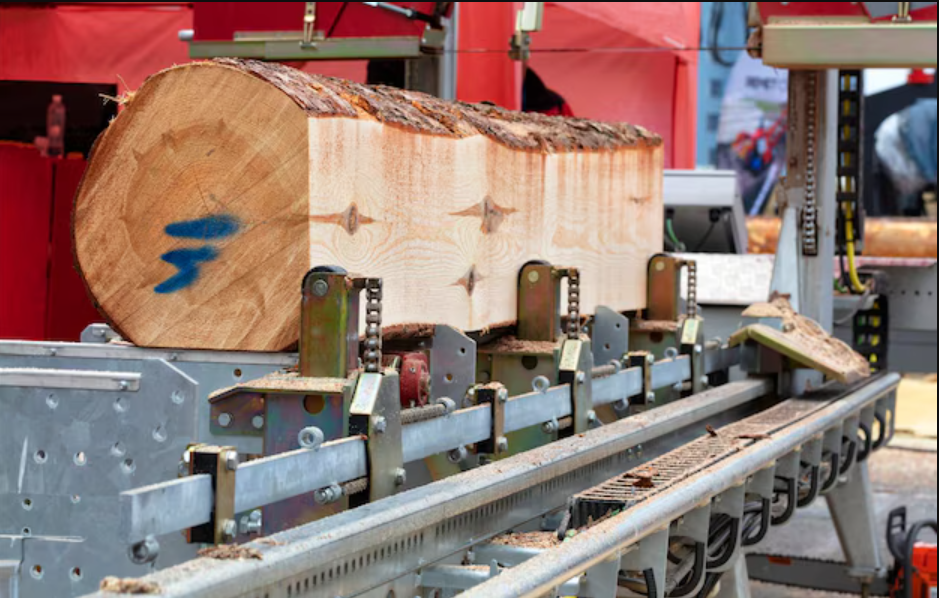What Is a Programmable Saw Stop and Why Does It Matter in Woodworking?

Woodworking is a trade that combines precision, safety, and efficiency. One of the most critical inventions in the industry is the Programmable saw stop, a technology aimed at maximizing cutting operations while enhancing accuracy and safeguarding workers. For woodworking professionals and production companies, knowledge of this cutting-edge tool is imperative. As increasing demand for quicker production and less waste continues to grow, programmable systems have emerged as the foundation of the contemporary workshop. This article discusses the most significant reasons why programmable saw stops are revolutionizing woodworking, highlighted in ten significant points culminating in a simple conclusion.
1. Understanding the Programmable Saw Stop
Essentially, a programmable saw stop is an apparatus that enables users to input accurate measurements using digits, so the saw blade will cut materials precisely where needed. In contrast to manual stops involving guesswork or constant re-adjustments, programmable stops remember measurements and reproduce them with uniform accuracy. This characteristic eradicates errors due to human estimation as well as speeds up the workflow. In those sectors where precision is essential, e.g., cabinetry, furniture, and millwork, this development has a vital role in ensuring quality output.
2. Increased Precision for Every Cut

Many woodworking tasks involve repeated measurements of the same length, and even small variations can lead to scrap or weaken structure. By using a programmable saw stop, operators are able to set precise measurements, enabling repeatable, consistent results. In addition to assuring a professional appearance, material loss is minimized. Dependence on precise cutting measurements enhances productivity and results in a finer-quality final product, particularly in mass production projects or fine detail work.
3. Enhancing Safety Levels in Workshops
Safety is among the key reasons why programmable saw stops are increasing in significance. In woodworking, saw accidents can be serious. Programmable systems minimize manual adjustments close to the blade, exposing operators less, and making them safe. Most systems also have inbuilt protection and will automatically stop or retract when mistakes are sensed. By minimizing the physical intervention of workers in adjustments, programmable saw stops not only make procedures more efficient but also save lives.
4. Efficient Workflow and Downtime Minimization
Manual stops and measurement can hinder production, particularly if changes need to be made for various cuts. A programmable saw stop minimizes this by retaining programmed stops that can instantly be recalled. This saves downtime between operations and increases workflow. Rather than constantly interrupting to measure and adjust, operators can flow from one cut to the next. For companies concerned with efficiency, this function saves time, lowers costs, and provides more streamlined production cycles.
5. Material Optimization and Avoidance of Waste
Each item of wood holds value, and minimizing waste is vital to staying profitable. Programmable saw stops optimize material use by maintaining accurate cuts and reducing offcuts. Multiple dimensions can be programmed by the operator and allow for perfect nesting, minimizing leftover waste. In the long term, this equates to considerable cost savings. With hardwood, softwood, or engineered products, programmable systems enable the use of resources to their full potential, meeting economic and environmental objectives.
6. Facilitating Customization and Sophisticated Projects

Not all woodworking projects are simple. Special furniture, special cabinetry, and specialty wood items typically need complicated cutting patterns. A programmable saw stop provides workshops with the ability to control such needs. Users can enter multiple measurements for multiple cuts and change between them instantaneously. Such flexibility enables manufacturers to take on more complicated jobs without compromising time or precision. With customers increasingly asking for custom products, programmable systems enable workshops to service them effectively.
7. Productivity Gains in High-Volume Operations
For mass production operations, productivity is essential. A programmable saw stop boosts throughput with the ability to make rapid adjustments, repeat precision, and less downtime. This allows teams to finish more projects in less time without sacrificing quality. By pairing automation with accurate controls, programmable systems enable companies to scale operations effectively. When working in high-stakes competitive markets where timeliness counts, this productivity increase can greatly contribute to sustaining customer satisfaction and business expansion.
8. Long-Term Cost Savings
Although the startup cost of a programmable saw stop will be higher, the long-term profit will far exceed the price. Less waste, increased accuracy, fewer mistakes, and quicker work all serve to decrease production costs. Plus, there will be fewer accidents in the workplace and less lost time, further helping profitability. In the long run, companies that implement programmable technology will find that the return on investment is high, making the upgrade a smart one for small workshops as well as large-scale manufacturers.
9. Combination of Technology and Traditional Craftsmanship
The combination of traditional skills and technology is one of the most distinctive features of woodworking. Programmable saw stops do not substitute craftsmanship but complement it. By taking care of repetitive measuring and cutting operations, these systems leave skilled labor free to concentrate on design, finishing, and creative elements of projects. This equilibrium enables companies to produce products that are of artisanal quality while enjoying the advantages of contemporary efficiency. The combination of technology such as programmable stops is the future of woodworking since it harmonizes tradition and innovation.
10. The Role of RazorGage in Developing Programmable Saw Stops

Among firms at the forefront of programmable saw stop technology, RazorGage has gained a reputation for creating dependable, accurate, and easy-to-use systems. Their products are engineered to benefit woodworking enterprises of every scale with accuracy, durability, and efficiency. Through emphasis on innovation and simplicity, RazorGage enables workshops to shift from manual to automated systems with little learning curve. This makes it possible for enterprises to have increased productivity and better outcomes while remaining competitive in the competitive market of today.
Conclusion
The woodwork industry remains in flux, and products such as the Programmable saw stop are at the heart of this change. From increased accuracy and safety measures to productivity increases and cost reductions, programmable systems bring value to each step in the process. They allow workshops to minimize waste, automate processes, and implement customization, while safeguarding workers and providing consistent quality. For companies that want to remain leaders in a competitive marketplace, embracing advanced tools is no longer a choice but a necessity. With ongoing technological innovation, tools such as those provided by RazorGage will become increasingly influential in determining the woodworking industry's future direction. When used in conjunction with other innovations like Length Stop Measuring Systems, programmable saw stops become part of an integrated strategy for efficiency, precision, and ultimate achievement in woodworking.







